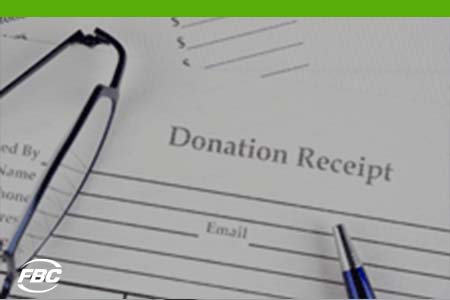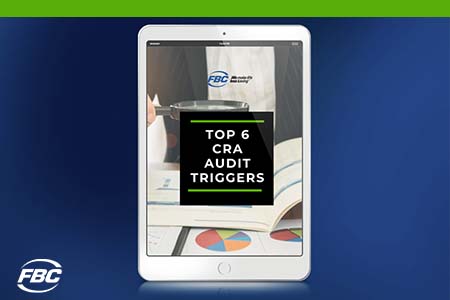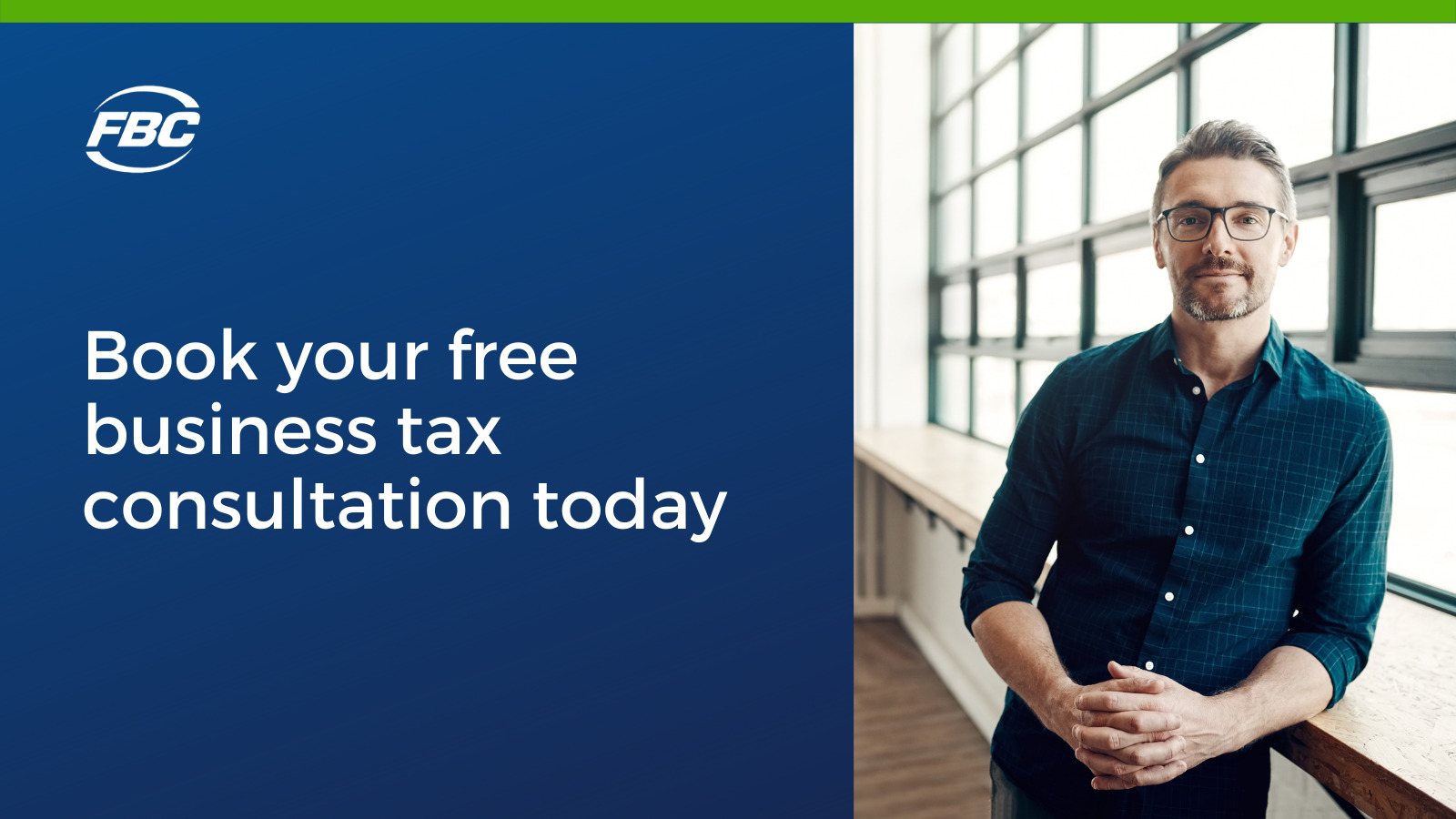Ultimate Guide to Tax Planning and Preparation for Canadian Farmers, Contractors, and Small Business Owners
Tax planning and preparation strategies to help you make the best decisions for your business.
Introduction
For Canadian farmers, contractors, and small business owners, strategic tax planning and preparation are crucial to maximizing savings and preparing for the future. When you implement best practices and take advantage of tax tips, you can save costs each year while also taking steps to lower your future tax obligation.
Here, we’re taking a deep dive into tax planning and preparation strategies to help you make the best decisions for your business.
Download a PDF version of this guide by filling out this form, or keep scrolling to learn more.
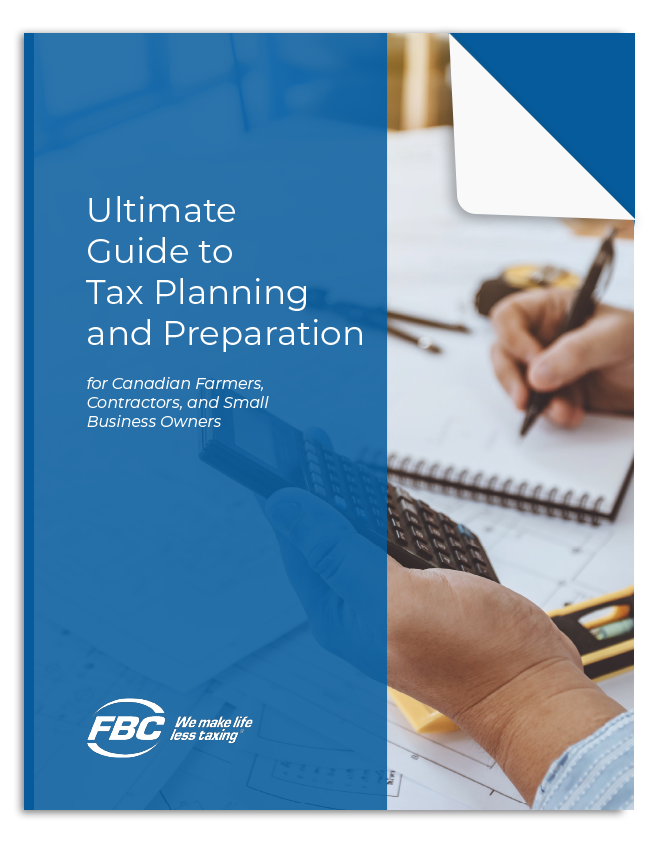

Tax Planning and Tax Preparation: A Winning Combination
The terms “tax planning” and “tax preparation” are often used interchangeably, but they represent two distinct and important strategies. Both are necessary to help reduce your tax liability. Moreover, your tax planning will affect your preparation, and your tax preparation will inform future planning.
What is tax planning?
Tax planning isn’t a once-a-year endeavor. It requires a comprehensive approach to your finances and should be carried out year-round. Careful tax planning is an important element of a well-crafted financial planning strategy. Some decisions that tax planning can help with may include:
- Timing of income and expenses
- Understanding which investments belong to registered versus unregistered plans
- Filing of common available deductions
Fall is the best time to start thinking about your taxes. It allows you to organize your receipts and assess which cost-saving actions you can take before the end of the tax year. Tax planning strategies can include maximizing any deductions, credits, and exemptions provided by tax laws and making contributions to a registered retirement savings plan or tax-free savings account.
FBC works with business owners year-round, helping them make strategic decisions that will result in cost savings when tax season arrives. Other tax planning strategies may involve making capital purchases, safeguarding estates, and optimizing investments. FBC will show you how to efficiently plan year-round, helping you save on your business tax return.
What is tax preparation?
Tax preparation is the process of organizing and filing your annual tax returns. This process involves gathering the necessary financial documents and records to determine whether you’ll owe taxes to the Canada Revenue Agency (CRA) or receive a refund.
Tax preparation may seem like a straightforward process, especially for individuals with simple financial situations. However, it can become more complex for those with self-employment income or multiple income streams and investments. That’s why many business owners hire tax specialists to maximize potential deductions and credits and to ensure their returns are accurate and compliant with tax laws.


Business Tax Planning Strategies
Tax planning must be a continuous effort. Unfortunately, it's easy to fall behind. Strategic tax planning gives businesses the opportunity to assess cost-saving actions before the tax year ends—and potentially lower their future business or corporate income taxes.
Here are several tax planning strategies that can set you up for success:
1. Contribute to a tax-free savings account (TFSA).
A TFSA is a registered investment or savings account that lets you set aside already-taxed income. These funds—along with any interest earned in this account—can be withdrawn tax-free.
TFSAs don’t offer up-front tax relief, but your money will accumulate tax-free, and you won’t be taxed on withdrawals.
You can use your TFSA for investments such as guaranteed investment certificates, stocks, bonds, or mutual funds. Any investment income earned through your account and capital appreciation from stocks and bonds is tax-free.
You will accumulate TFSA contribution room each year (from 2009) even if you don’t file a tax return or open a TFSA. You can also withdraw from your TFSA at any time, and withdrawals free up more contribution room for you in the future.
Currently, the TFSA contribution limit is $7,000. TFSA earnings won’t impact eligibility for income-tested benefits (Old Age Security or employment insurance) or federal credits (Canada Child Benefit or services tax/harmonized sales tax credits).
Explore Related Resource:
2. Contribute to a registered retirement savings plan (RRSP).
Just like investing in a TFSA, an RRSP offers tax-deferring benefits. Contributions made to an RRSP are deducted against your current income, offering immediate tax relief and tax-sheltered growth. When you eventually withdraw the money during your retirement, it will be taxed at a much lower rate.
Contributing to an RRSP can dramatically reduce your taxable income. To maximize the advantages of an RRSP, you should make contributions when you’re in a higher tax bracket. And you should make withdrawals when you’re in a lower tax bracket.
Your deduction limit is the amount you can put into your RRSP and use as a deduction on your income tax report. For the 2023 tax year, it’s up to 18 percent of your reported 2022 income. For 2022, the limit was $29,210. For 2023, the RRSP deduction limit is $30,780.
Your contribution limit is equal to the current year’s deduction limit plus any unused deduction room from previous years.
Because most people don’t contribute the maximum amount to their RRSPs every year, your deduction limit will be much lower than your contribution limit.
Explore Related Resources:
- Should I Use an RRSP or TFSA as a Business Owner?
- Converting an RRSP to an RRIF
- The Best Way for Canadian Small Business Owners to Invest Their RRSP
3. Review mileage logbook and vehicle expenses.
Anyone who uses their personal vehicle for business purposes can deduct a portion of its use expenses, such as fuel and maintenance costs. It’s important to remember to make sure you’re regularly maintaining and updating your mileage log so you have a record of your business travel for the entire year. Without a detailed record of your mileage, the CRA may not allow your vehicle expenses as a tax deduction.
To qualify, you must use your personal vehicle to earn business income. This may include travel from:
- Your home to a client’s place of business (or other location to attend a business meeting) and travel directly back home
- Your home to a client’s place of business (or other location to attend a business meeting) and back to your office or place of work
- A client’s place of business (or other location to attend a business meeting) and back home
What vehicle expenses are eligible?
You can deduct a portion of the following expenses that are related to using your vehicle for business use:
- Licence and registration fees
- Fuel and oil costs
- Insurance
- Interest on money borrowed to buy a motor vehicle
- Maintenance and repairs
- Leasing costs
Keeping this information in one place, which means diligently tracking your vehicle expenses, makes tax preparation easier when you’re ready to file.
How do I track vehicle expenses?
The best way to track vehicle expenses is by using a logbook to calculate the percentage of your vehicle that you use to earn business income. Make sure to track your mileage from Jan. 1 to Dec. 31, either by recording your odometer during business uses or using a mileage tracking app.
Mileage tracking apps are easy and convenient because they use GPS to record your vehicle while it’s in motion. Unfortunately, these apps aren’t always accurate. Make sure you’re tracking everything precisely by keeping a separate record of your odometer and keeping any related notes and receipts.
Whether you’re using digital files or an old-fashioned ledger, you’ll want to make notes for each trip, including:
- Trip date
- Destination
- Purpose
- Number of kilometres driven
Remember, for each tax year, you must record your total kilometres from that year as well as the total kilometres driven while earning business income.
Don’t forget to record your odometer reading at the beginning and end of the tax year. If you change vehicles, note the dates of the change and the odometer reading for the new or leased vehicle.
If you use more than one vehicle for your business, keep a separate record for each vehicle. Records should list the total kilometres driven during one year, the business kilometres driven, and all the associated expenses with each vehicle. You’ll also need to calculate the expenses separately for each vehicle.
Explore Related Resource:

4. Organize your business receipts.
Keeping track of your receipts and records often seems like an overwhelming task, but self-employed individuals and small business owners are required to maintain a written record of all business transactions. Detailed records will help you avoid unnecessary fees and penalties from the CRA, especially if an audit occurs.
Your records should also include any cancelled cheques and other vouchers to support your book entries. How can you stay on top of receipt organization? The following tips will help:
Use a business-only account and credit card.
Using a credit card and/or debit card is a great way to cross-check your receipts. To avoid mixing your personal and business expenses, set up a separate business account and credit card.
You can also claim any expenses associated with that card or account as long as you keep all your transactions business-related. This includes the annual fee on a points credit card and any interest from a balance carried from one month to the next.
Review your receipts once per month.
Make a monthly commitment to your receipts. Schedule at least 30 minutes every month to review and categorize your receipts to keep receipts manageable as the year progresses. This ensures that you don’t miss out on any potential expense-related tax deductions.
A simple way to organize your receipts is to use an accordion folder. We recommend organizing your receipts by category and year so that you can find a receipt quickly in the future.
Write notes on your receipts.
For meal and entertainment receipts, write down details. Most of the time, this is as simple as noting who you met with and the purpose of the meeting. You can deduct 50 percent of your total meal and entertainment expenses for business purposes.
Back up your paper receipts.
Because paper receipts can fade over time, keep a digital copy of each receipt. Take photos of your receipts and upload them to a central location later.
You can also use an app on your mobile device to take a picture and digitize a receipt on the spot. We like the Kashoo app to make tracking receipts easy and efficient.
5. Leverage income splitting
Income splitting redistributes income within the same family—usually from a spouse who falls in a higher tax bracket to a spouse in a lower tax bracket. This tax planning strategy may reduce a family’s overall tax bill.
Income splitting involves moving income from a family member in a higher tax bracket to a family member in a lower tax bracket. Because Canada has a graduated income tax system, income splitting may help reduce the overall family tax burden.
This can be a money-saving strategy for Canadian farmers. Because the average age of a Canadian farmer is around 56, income splitting may lead to a lower overall tax bill for married couples in Canada, allowing them to use the lower-earning spouse’s salary and other income for investment purposes. This results in the family’s total investment income being taxed at the lowest possible rate.
Attribution rules set forth by the CRA prevent many Canadians from income splitting, so if you give your spouse part of your income, they’ll attribute it back to you, and you’ll be taxed at a higher rate.
However, there are exceptions that allow you to use income splitting to grow your family wealth. While the following three strategies can help make income splitting work for you, it’s important to always consult with a tax specialist to understand if income splitting can help lower your family's taxable income.
Lend your spouse money.
The CRA allows spouses to loan one another money for investment or commercial use as long as you follow these rules:
- It must be an interest-bearing loan, and you must have a loan agreement or promissory note in place.
- The interest must match the prescribed rates the CRA set forth at the time the loan is originated.
- Your spouse must pay the interest by Jan. 30 of the following year.
Note: The prescribed interest rate (which the CRA sets quarterly) remains fixed for the term of the loan. If your investment has expected returns higher than the prescribed interest rate, it will help bring down your taxable income. Any return is taxed at your spouse’s lower rate. Plus, your spouse can deduct the loan interest expense.
Split pension income.
If you’re 65 years or older, you can split up to 50 percent of eligible pension income with your spouse. This includes:
- Lifetime annuity payments under an RRSP
- Deferred profit-sharing plan
- Payments from an RRIF
Although you’ll still receive the actual income, you can split it on your tax return to lower your tax payable.
Make contributions to a spousal RRSP.
You can contribute to a spousal RRSP to help even out retirement savings for yourself and your spouse if they earn a lower income since contribution room is based on earned income.
Here’s how it works:
Your spouse would open a spousal RRSP account in their name (separate from their personal RRSP account), and you then could contribute to the spousal RRSP. Be careful not to go over your RRSP contribution limit. If you max out your RRSP, you can’t contribute to the spousal RRSP.
When your spouse withdraws the money in retirement, they’ll pay the tax on the withdrawals at their lower tax rate.
Additionally, the CRA introduced a tax on split income in 2018. This tax applies to dividends and changed corporate structures. Ultimately, it means you can’t pay dividends to your spouse or children if your business is unincorporated unless they’re actively involved in business operations. Certain exceptions can bump you out of these rules, and certain professions cannot use them.
Explore Related Resource:
6. Understand capital gains.
Major purchases or losses will impact your tax burden. Capital gains refer to any monetary increase in an asset’s value once it has been sold. If you choose to sell any units, shares, or securities that came with an information slip, you must report a capital gain or loss to the CRA.
According to the CRA, the following circumstances qualify as a capital gain or loss:
- One property has been exchanged for another.
- You’ve gifted property that’s not cash to someone else.
- You convert shares or other securities in your name.
- You’ve settled or cancelled a debt that was owed to you.
- You’ve moved certain property into a trust.
- Your property is expropriated, stolen, or destroyed.
- An option that you held to buy or sell property expires.
- A corporation redeems or cancels shares or other securities that you hold.
- All or part of the property's usage has been changed.
When it comes to capital gains, you can sell shares without paying taxes if they meet certain regulations. If you have a taxable capital gain from the sale of a qualified farm or fishing property (QFFP), it may be possible to claim a capital gains deduction. For it to be considered a QFFP, you, your spouse, or your common-law partner must own the property. Additionally, anyone renting out their farmland could unintentionally negate their ability to carry out an intergenerational farm rollover or the $1,000,000 lifetime capital gains exemption.

Offsetting Capital Gains Through Succession Planning
Another way to offset capital gains is to have the right succession plan when you’re ready to retire, transfer ownership, or sell your farm or business. To roll over farm property to heirs on a tax-deferred basis, the property must have been used principally in the business of farming before the rollover.
A good succession plan should:
- Ensure the transfer of your business is carried out seamlessly and without issues.
- Protect the reputation of your farm or business.
- Build value and provide financial security for you, your family, and stakeholders.
- Ensure that you’ve taken advantage of all available tax deductions, credits, and exemptions.
Taking the time to create a solid succession plan doesn’t just build financial security—it also protects your business and ensures smoother operations during and after the transfer.
A good succession plan should protect the reputation of your farm or business while building value and providing financial security for you, your family, and stakeholders.

Take advantage of capital cost allowance (CCA).
If you purchase a fixed asset with a long-lasting life in your business, you can’t deduct the entire cost as an expense during one taxation year. Since fixed assets wear out over time, they are considered “capital.” These expenses can be deducted over a period of several years using CCA.
CCA is the portion of the asset the CRA will allow you to deduct as depreciation on your tax return each year. If you have depreciable assets to sell, you may want to wait until the next fiscal year. The delay lets you claim another year of CCA in the current tax year.
However, any gains on the fixed asset will also be included in your income in the following year, and the CCA will be reduced by deducting the proceeds from the sale.
How much CCA can I claim?
The amount of CCA you can claim depends on the type of property you own and when you acquired it. The CRA groups fixed assets into different classes, and each class has its own depreciation rate.
You don’t have to claim the maximum amount of CCA in any given year. You can claim the amount you would like, from zero to the maximum allowed for the year. This is a good opportunity to take stock of your tax position and if it would benefit you to claim CCA.
If you don’t have to pay income tax for the year, you may not want to claim CCA since it reduces the balance of the class by the amount of CCA claimed. As a result, the amount of CCA available for you to claim in future years will be reduced. In this case, you could save the CCA for future years when your tax bill is higher.

Additional Resources for Farmers When Tax Planning
Tax planning strategies for farmers will likely differ on a case-by-case basis. Even the most experienced farmers may find the dramatic income swings that come with a life in the agriculture industry can be stressful when tax time arrives.
Although a good year leads to higher income, it also means paying more taxes. A bad year where you can’t deduct your loss against other nonfarm income offers no tax advantage, either. You could also miss out on valuable tax credits. However, if your farm uses the cash accounting method, you can average out these income fluctuations by using optional inventory adjustments or manual inventory adjustments.
What is an optional inventory adjustment (OIA)?
An OIA is an income-averaging strategy that gives farmers more control when it comes to being taxed on unsold inventory. The process, which is spread over a two-year tax cycle, balances out your present tax owing with the tax you will be required to pay when your income is higher.
How does it work? During the first tax year, a cash-accounting farm claims any amount up to the full fair market value (FMV) of their unsold year-end inventory as income.
The CRA defines FMV as “generally, the highest dollar value you can get for your property in an open and unrestricted market between an informed and willing buyer and an informed and willing seller who are dealing at arm’s length with each other.” Although you can use OIA to boost your income level, if you keep it within the lowest tax bracket, you will be taxed at the federal marginal rate of 15 percent.
During the second tax year, the same amount is deducted from a cash-accounting farm’s income whether or not the inventory is sold. Although your income is higher from the sale of your farm inventory in year two, the OIA deduction lowers your income so that you are taxed less.
If your farm is in a loss position and you have no other taxable nonfarm income that you can apply the loss to reduce your overall tax burden, using an OIA could be beneficial.
At the end of the following tax year, you can look at your position after the previous year’s deduction has been applied. Depending on the results, you can again decide if you want to add in a new OIA amount for that year. This trend can continue until the year that there is no closing inventory value.
OIA can be part of a successful short- and long-term tax planning strategy. Just remember that whatever amount of OIA you claim in the first tax year must be deducted in the following tax year.
What is a mandatory inventory adjustment (MIA)?
An MIA must be applied when a farm is in a loss position and has purchased inventory on hand at the end of the year. The CRA developed MIAs to block potential tax avoidance by inflating inventory numbers at year-end to falsely create a loss against other income, including other employment or investment income.
With an MIA, the cost of any purchased inventory on hand must be added to farm income up to the point where the loss is eliminated.
Explore Related Resources:
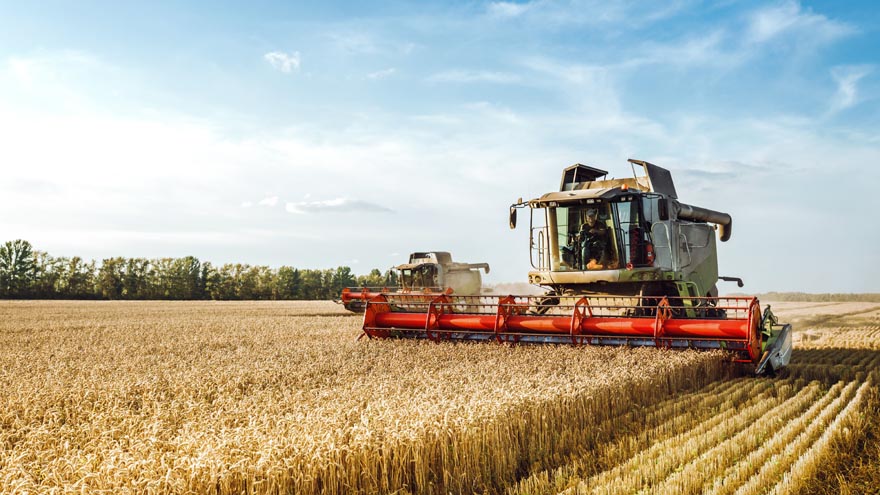
How can farmers plan for a transition in ownership?
A family-owned farm can be a profitable operation with serious financial implications. When considering the transition of your farming business, it’s important to understand whether the farm is viable and sustainable.
Viability simply means having enough money to feed your family. Being sustainable requires understanding the size and scope of your farm. You should also have an idea of how you plan to run the business operations over the next several decades before handing it off to a future generation.
Let’s take a look at a few of the nonnegotiables that incoming and outgoing participants must satisfy before the farm changes ownership:
- Lifetime capital gains exemption: Every individual on a qualified farm is eligible for $1 million in capital gains exemptions.
- Intergenerational farm rollover provision: This refers to the ability to transition the farm to the next generation on a tax-deferred basis.
- Will: A will should reflect a person’s intentions if a premature death occurs. It should identify who receives the farm’s assets. It can be helpful to enlist a lawyer to ensure that the proper terms are laid out.
- Executor: This is the person you choose to settle your estate following your death.
- Tax on split income: Often called “income sprinkling,” this is something farmers should understand.
Explore Related Resources:

How Do I File Taxes for My Unincorporated Small Business in Canada?
Owning and operating a small business can be complicated. There are many specific rules, regulations, and guidelines to follow when filing your taxes each year.
Along with declaring your income and completing form T2125, if you are self-employed, you are required to provide the CRA with your industry code—a six-digit number that corresponds to your business or occupation. Statistics Canada uses this data to monitor business trends, and the CRA uses these codes to compare similar businesses within an industry.
Filing a return will also allow you to claim:
- Provincial tax benefits
- Tax refunds for instalment or source deductions
- Refundable medical expense supplement
- Canada Pension Plan or employment insurance premium overpaymentsr
Explore Related Resources:
Along with declaring your income and completing form T2125, if you are self-employed, you are required to provide the CRA with your industry code.

What are the deadlines?
Individual tax returns are generally due April 30 each year. However, if this date falls on a weekend, you have until the next business day to file.
Self-employed individuals, along with their spouses and common-law partners, must file their taxes by June 15. And although it may appear that you have extra time to file, you must pay any money owed by the April 30 deadline to avoid any additional interest or penalties.
What happens if I don’t file?
If you don’t file a return on time, you’ll be assessed a penalty of 5 percent of the amount owed plus 1 percent of the unpaid tax for each month the tax return is late (to a maximum of 12 months). You will also be charged compound daily interest on any outstanding tax owed.
Explore Related Resources:

Your Business Structure Will Impact How You Prepare Your Taxes
Sole proprietorships, partnerships, and corporations are the three most common for-profit business structures in Canada. Each type has different characteristics that will impact how you file your taxes.
What is a sole proprietorship?
A sole proprietorship is the most basic type of business structure. In it, a single person owns the business, makes all important decisions, keeps all the profits, and assumes the risks of the business. A sole proprietorship is easy to set up and dissolve, has low startup costs, and has fewer regulations than other structures. With this structure, you have only one tax return to file; you declare any profit from the business on your individual income tax return.
What is a partnership?
A partnership is a nonincorporated business between two or more people. A partnership has no legal structure, and partners should have an agreement that stipulates how the business is structured when it comes to revenue, profits, expenses, and liabilities. A partnership is simple to form and dissolve and has low startup costs. Each partner is responsible for filing their own income tax return and claiming their share of the partnership’s profits or losses.
What is a corporation?
A corporation is a formal business arrangement that creates a legal entity separate from the owner. Incorporation offers small business owners the most tax and liability advantages. When it comes to tax planning and tax preparation, an incorporated business can take advantage of many different benefits and strategies. Corporations limit owner liability. Because a corporation is technically its own entity, it protects your personal assets if someone takes legal action against your business. Corporations can also take advantage of the small business tax deduction and pay a lower tax rate on the first $500,000 of active business income.
Incorporating a small business in Canada offers other advantages, such as:
- Limited liability
- Lower tax rates
- Income tax deferral
- Lifetime capital gains exemption
- Income splitting
How do you know if this is the right tax planning strategy for you? It can be helpful to ask the following questions:
- Do your corporate tax benefits outweigh the costs of extra administrative duties?
- Do you want to reinvest portions of capital into expansion?
- Does your debt servicing demand a large portion of profits?
- Do you want greater flexibility for closing or selling your business?
Another major advantage to incorporation is the preferential income tax rate. When you operate your business as a sole proprietorship or partnership, you include all your business expenses and income—including farm and off-farm income—on your personal tax return.

What Are Self-Employed Income Taxes?
Self-employed individuals can write off expenses, but if you own a business that isn’t incorporated, your self-employment income is always taxed at the standard personal rate. And although your income is considered a different type, it still falls under the same tax rate.
To be considered a self-employed contractor, you must operate a business and participate in a business relationship with the payer. This relationship is a contract for services. This means that you’re responsible for knowing how much money you make, what you can and can’t deduct as a business expense, and how much money you’ll need to remit in taxes.
In a marginal tax rate system, individual taxpayer income is categorized into tax brackets. These brackets determine the rate of tax applied to the taxable income that falls within a certain range. This means that the first dollar earned will be taxed at the rate for the lowest tax bracket, and your last dollar earned will be taxed at the rate of the highest bracket.

What are the personal and self-employed income tax rates in Canada?
If you run a business as a sole proprietor or are self-employed, the income you earn through your business is taxed at the personal rate. For 2023, personal income is taxed at the following rates:
- 15 percent on the first $53,359 of taxable income, plus
- 20.5 percent on the portion of taxable income over $53,359 up to $106,717, plus
- 26 percent on the portion of taxable income over $106,717 up to $165,430, plus
- 29 percent on the portion of taxable income over $165,430 up to $235,675, plus
- 33 percent on the portion of taxable income over $235,675

The Advantages of Tax Deductions
A tax deduction is simply an amount of money that you can deduct from your overall taxable income to reduce the total taxes owed. Depending on how your business is structured, a variety of tax deductions and tax credits might be available. Understanding these deductions and credits will help maximize your annual tax savings.
Business expenses can pile up quickly. Fortunately, there are many tax deductions you can use to reduce your tax burden. From accounting and legal fees to business use-of-home expenses, maximizing your eligible tax deductions can dramatically reduce your tax liability and improve your tax preparation strategy.
Explore Related Resources:
What are some available tax deductions?
Here are some common tax deductions that you can claim:
- Accounting and legal fees
- Bad debt
- Business advertising and promotional expenses
- Business taxes, licences, and memberships
- Business-use-of-home expenses
- Depreciation expenses
- Employee salaries and benefits
- Interest and bank charges
- Insurance premiums
- Meals and entertainment
- Office expenses
- Rent
- Repairs and maintenance
- Tools and equipment
- Vehicle expenses
This list isn’t exhaustive and doesn’t include all eligible tax deductions for small business owners or self-employed individuals. That’s why it’s important to work with qualified tax specialists during the tax planning process.

The Advantages of Tax Credits
Unlike tax deductions, tax credits lower the total amount of taxes you owe on a dollar-for-dollar basis. This means that if your total tax credits equal $200, you subtract $200 from the total amount you owe.
Tax credits are calculated as a percentage of the total amount paid. If your unincorporated small business made a $150 donation to a charity, you would be eligible for a federal charitable tax credit of up to 15 percent of $150, which equals $22.50. Let’s take a look at some available tax credits.
What investment tax credits are there?
According to the CRA, small business owners can claim a few investment tax credits:
- Atlantic Investment Tax Credit: You may qualify for this credit if you purchased certain new buildings, machinery, or equipment that you used in specific areas of Canada as part of certain qualifying activities, such as farming, fishing, logging, manufacturing, or processing.
- Scientific Research and Experimental Development Tax Incentive: You may qualify if you’ve carried out work that’s considered scientific research and experimental development.
- Apprenticeship Job Creation Tax Credit: If your small business has hired an apprentice, you can claim 10 percent of their wages, up to a maximum of $2,000 per eligible employee.
If you’ve qualified for investment tax credits but failed to claim them, you can carry forward any credits you earned during tax years after 1997 for up to 20 years.
Unlike tax deductions, tax credits lower the total amount of taxes you owe on a dollar-for-dollar basis.
How can you receive a tax credit for charitable donations?
Unincorporated small businesses can receive a tax credit for any charitable donations made.
To determine your charitable tax credit, you must identify the eligible amount of your donations. Only certain types of gifts are eligible. During a single year, you can claim:
- Any donations made by Dec. 31 of the applicable tax year
- Any unclaimed donations during the previous five years
- Unclaimed donations your spouse or common-law partner made during the year or during the previous five years
You can claim eligible amounts of gifts up to 75 percent of your net income. Once you’ve identified the correct amount, you can calculate your charitable tax credit by viewing the CRA’s donation tax credit rates. Any eligible amount donated that’s more than $200 will qualify you for a higher rate. Donations must be made by Dec. 31 of the applicable tax year. You can also claim any unclaimed donations you, your spouse, or your common-law partner made during the past five years.
There are two charitable tax credits: one rate for the federal government and one rate for the province or territory in which you live.
The following example illustrates how these federal and provincial calculations work. A donor in Alberta with a taxable income of $40,000 donates $700 in 2022. Their tax credit is calculated as the total of:
| Federal Credit Calculation | Tax Credit Value |
| 15% on the first $200 | $30 |
| 29% on the remaining $500 | $145 |
| Total federal credit | $175 |
| Provincial Credit Calculation | Tax Credit Value |
| 10% on the first $200 | $20 |
| 21% on the remaining $500 | $105 |
| Total provincial credit | $125 |
| Total Federal Credit | Total Provincial Credit | Total Charitable Tax Credit |
| $175 | $125 | $300 |
The total charitable donation tax credit for the year 2022 in this example is $300. To learn more about how to calculate your charitable tax credits and see other examples, visit the CRA website.
What medical tax credits can you claim?
There are a couple of medical tax credits you can claim. They are:
- Disability Tax Credit: Taxpayers who live with severe and prolonged mental or physical impairment can claim a disability amount of $8,870 (2022 amount), which equates to a federal tax credit of $1,330.50. To qualify, a medical doctor, nurse practitioner, or other eligible practitioner—depending on the impairment—must certify the impairment on form T2201.
- Medical Expense Credit: Once you’ve surpassed a certain amount, you and your spouse can claim medical expenses for one another and any dependent children under the age of 18 at the end of the tax year. If other family members relied on you for financial assistance, you may also be able to claim medical expenses paid on their behalf.

After You File
You’ve finally filed your return after careful preparation and months of planning—whew! However, the process isn’t quite complete. Here’s what you need to know after you file:
What is a notice of assessment (NOA)?
Once you’ve filed your tax return, you’ll receive a notice of assessment (NOA) from the CRA. This annual statement tells you how much income tax you owe (or the total amount of your tax refund). It lists important details, such as your RRSP deduction limit. Your NOA will also carry over amounts for next year’s return, such as any unused tuition, education credits, and capital losses.
Explore Related Resources:
How do tax instalments work?
Instead of paying taxes in one lump sum on April 30 of the following year, tax instalments are paid during the same year your income is earned.
If your net tax owing was more than $3,000 ($1,800 in Quebec) for 2022, 2021, or 2020, you must pay instalments in 2023.
This scenario can occur when your employer doesn’t withhold enough taxes, if you’re self-employed, or if you have more than one job. It can also happen when you receive additional income sources from investments, rental properties, or certain pension payments. When you file your taxes, you must claim the instalment payments made in the same year you earned the income.
Tax instalment payments are typically due each quarter on March 15, June 15, Sept. 15, and Dec. 15. Late payments or payments that don’t contain the full amount will face extra interest and penalties.
How will I know if I have to pay tax instalments?
The CRA will look at your tax return from the previous year and send instalment reminders based on prior returns. Although payments are typically due each quarter, the CRA will send two instalment reminders: one in February and one in August.
How do you calculate instalment payments?
There are three different options you can use to calculate your instalment payments:
- No-calculation option: This is ideal if your income, deductions, and credits remain the same each year. With this option, the CRA determines the amount of your instalment payments based on your latest assessed tax return.
- Prior-year option: If your 2023 income, deductions, and credits will be similar to 2022 but significantly different from 2021, then you can determine the instalment payments based on your 2022 tax return.
- Current-year option: This option is best if your 2023 income, deductions, and credits will be vastly different from those in 2022 and 2023. In this option, you determine your amount based on the estimated current-year net tax you owe.

What happens if I receive a notice from the CRA stating its intention to audit?
The notice will outline the information needed and where the audit will take place. It could be a desk audit that occurs at the CRA offices, or it could take place at your business.
During a tax audit, the CRA will examine the books and records of a taxpayer more closely. They make sure the taxpayer has properly fulfilled their tax obligations, correctly adhered to tax laws, and received the correct benefits and refunds they’re legally entitled to.
Although the CRA is choosing to audit more small- and medium-sized businesses, audits don’t have to be scary—especially if you’ve legally complied with the proper tax rules and regulations. In fact, the CRA selects many taxpayers randomly for audits.
However, sometimes the CRA will scrutinize businesses that largely deal with cash, businesses where receipts may not be necessary, or businesses that report margins or incomes that don’t fit within a certain standard within an industry. The CRA may also look more closely at taxpayers who claim rental or business losses.
What should I do if I’m audited?
Maintaining accurate, detailed records will make the audit process easier for you. If the CRA contacts you about an upcoming audit, make sure to contact your tax specialist immediately to arrange qualified representation during the audit. Once you’ve done this, contact the CRA for a written request that lists all the specific documents it needs to review.
Make sure to gather everything the CRA asks for. This will ensure the process goes smoothly. During the audit, do your best to answer any questions as honestly as possible, but don’t offer any information they didn’t request.
Once the CRA has finished your audit, it will make any tax adjustments and send you a proposed statement of adjustments for rebuttal within 30 days before issuing a notice of reassessment. This statement will detail any additional taxes and interest owed, plus penalties and fees. If you don’t agree with the CRA assessment, you can appeal.

Enlisting a Specialist to Help with Tax Planning and Preparation
FBC recognizes that it’s difficult to understand the correct business structure to offer you the most tax credits and tax deductions. We also understand the tax planning strategies that will allow you to maximize your future wealth. We’ll even help you keep accurate receipts and records so that you don't get audited.
With CRA representation and audit support, an FBC specialist will handle communication with the CRA, taking the stress off you and protecting you from revealing more information than is legally required.
FBC has collectively helped members save more than $42 million.
Our unique membership model gives you year-round access to tax experts and advice. FBC can act as your strategic business partner, helping provide the tax planning advice that helps your business achieve goals both today and tomorrow.
Download a PDF version of this guide by filling out the form














![Small Business Tax Preparation [Free Checklists] Small Business Tax Preparation [Free Checklists]](https://fbc.ca/wp-content/uploads/2023/10/Small-Business-Tax-Preparation-Free-Checklists.png)



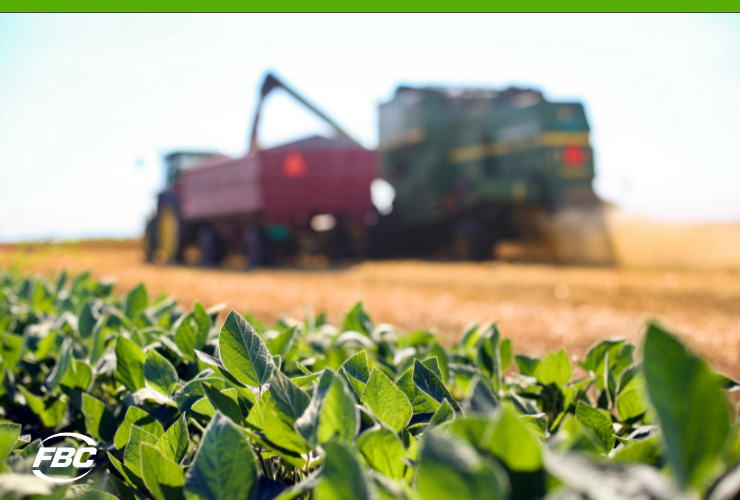










![Benefits of incorporating your farm [lower taxes] Benefits of Incorporating Your Farm [Lower Taxes]](https://fbc.ca/wp-content/uploads/2023/10/Benefits-of-incorporating-your-farm-lower-taxes.jpg)

![How to manage your taxes if you are self-employed [7 tips] How to manage your taxes if you are self-employed [7 tips]](https://fbc.ca/wp-content/uploads/2023/11/How-to-manage-your-taxes-if-you-are-self-employed-7-tips-.png)





